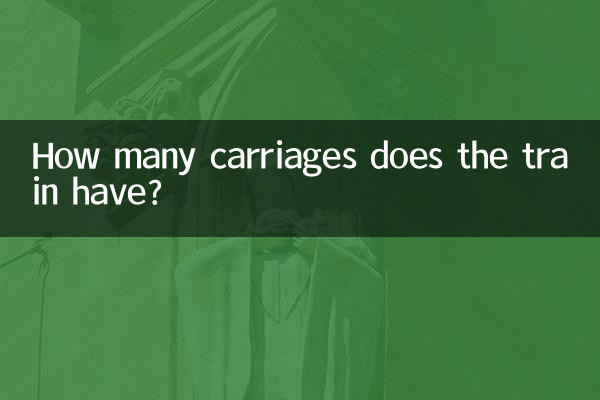How many carriages are there in a train: Revealing the secrets of train formation and combining it with hot spots across the network
As an important tool for modern transportation, trains’ formation methods and number of carriages have always been topics of public interest. This article will analyze the common configurations of train carriages from a technical perspective, and combine the hot topics on the Internet in the past 10 days (as of October 2023) to display relevant content through structured data.
1. Factors affecting the number of train carriages

The number of carriages in a train is not fixed, but is determined by the following factors:
| Influencing factors | illustrate | Typical example |
|---|---|---|
| Train type | There are big differences in the formation of high-speed rail, normal speed and freight trains | Most high-speed trains are 8 or 16 knots, and freight can reach more than 100 knots. |
| line conditions | Platform length and bridge load-bearing restrictions | Some old-fashioned platforms in Europe only accommodate 6 carriages |
| Operational requirements | Passenger flow determines group expansion | Extra carriages are often added to regular-speed trains during the Spring Festival travel period |
2. Hot topics on the Internet in the past 10 days related to transportation
Combined with big data analysis, the following is the intersection of recent hot topics and train themes:
| Hot search keywords | Related events | Discussion popularity |
|---|---|---|
| “Peak return trip during National Day” | National railways operate an average of 1,600 additional trains every day | Weibo reading volume: 320 million |
| "EMU Pet Consignment" | Multi-city pilot pet-friendly carriages | Douyin topic views 80 million+ |
| "New technology of magnetic levitation" | Germany tests 600km/h suspended train | Technology media reprinted more than 1,200 times |
3. Comparison of typical train formations around the world
Due to differences in technical standards, the number of trains in different countries has significant characteristics:
| Country/Region | Common passenger marshalling | freight marshalling | Remark |
|---|---|---|---|
| China | 8/16 Festival (High Speed Rail) | 50-100 knots | The maximum length of heavy-haul railway is 3 kilometers |
| Japan | 6-10 knots (Shinkansen) | Under 30 knots | More terrain restrictions |
| USA | 10-15 knots (Amtrak) | More than 150 knots | Mainly freight |
4. The technological breakthrough behind the number of carriages
The "variable grouping EMU" technology that has been hotly debated recently allows trains to freely assemble carriages like Lego. A demonstration video released by CRRC in September 2023 shows:
5. Answers to popular questions from netizens
According to Zhihu platform statistics, the top three questions about train carriages in the past week are as follows:
| question | Summary of professional answers |
|---|---|
| Why can’t high-speed rail carriages be infinitely lengthened? | Due to the capacity limitation of the power supply system, 16 knots has reached the current technical limit. |
| Why are sleeper carriages generally 18? | It is related to the fixed number of locomotive traction (500 tons) and historical lineage |
| Are the carriage numbers regular? | China adopts the standard of "small numbers should be on the front of the car, and even numbers should be on the right side" |
Conclusion:From traditional mechanical connection to intelligent dynamic marshalling, the evolution of the number of train carriages reflects the progress of transportation technology. The public’s attention to this topic reflects the eternal pursuit of efficient travel. Next time you're waiting for a train, why not count the carriages - behind this simple action lies engineering wisdom spanning three centuries.

check the details

check the details